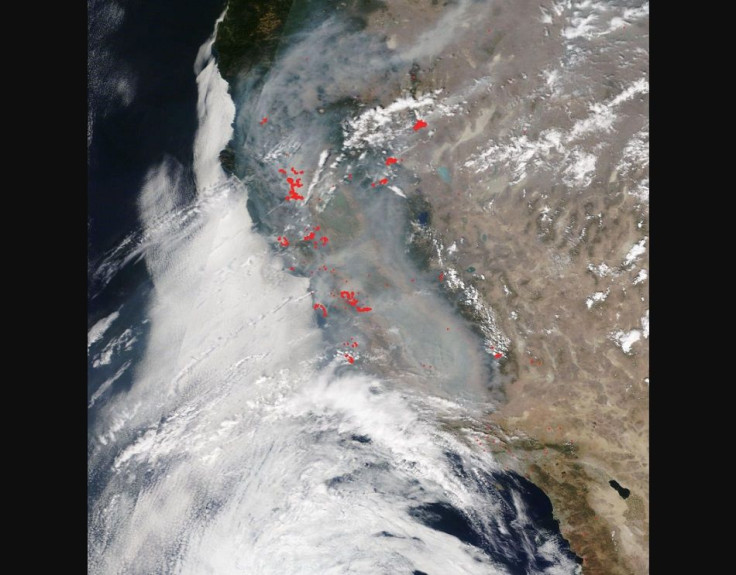NASA Satellite Captures California Wildfire Aerosols Moving Across US
KEY POINTS
- Over 600 wildfires continue to blaze across California
- Satellite data shows that the aerosols from the wildfire are now affecting other states
- Even those who are far from the wildfires should take precautions
As multiple wildfires continue to rage through California, the smoke from the fires is raising concerns about the air quality not just in the state but also in other parts of the country. Data from NASA’s Suomi NPP satellite shows the aerosols from the wildfires moving across the United States.
Over 600 wildfires continue to burn across California, two of which have become the second and third largest wildfires in state history. Satellites have been helping to track the progress of the wildfires, capturing images of a smoke-covered California and detecting actively burning fires.
In an image taken by NASA's Terra satellite on Monday, for instance, California can be seen covered in thick smoke, with the tiny red dots marking the areas that are actively burning. NASA, in a news release, said there are so many fires that the dots are already blurred so close together and the dots indicating individual fires can't be distinguished anymore.

Another major problem that comes with the fires is aerosols. In an image from NOAA-NASA's Suomi NPP satellite, one can see that the aerosols from the fires are no longer just affecting the state of California but has traveled across the country, affecting more distant states.
The deep reds indicate the highest aerosol concentrations, which could already affect visibility and health, can be seen even as far as Minnesota and Nebraska.

This is problematic because wildfire smoke and aerosols are harmful to health. Smoke from wildfires is composed of a combination of gases and fine particles from the wood and other organic materials that burn.
These microscopic particles can then get into the eyes and lungs, with children, older adults and those with chronic heart or lung illnesses being most at risk for being affected by wildfire smoke, leaving them more prone to lung infections.
"Farther from a wildfire, you may be exposed to smoke even if the fire itself is far away," the Environmental Protection Agency explains.
Given the wide range of smoke and aerosols from the California wildfires, it's important for people to monitor the air quality in their area even if they’re not near the active wildfires. This way, they can take the necessary precautions against exposure, both outside and inside their homes, since the smoke can also enter indoor spaces through ventilation systems or through small openings and cracks.
People can check the air quality in their locations on AirNow.gov.
© Copyright IBTimes 2025. All rights reserved.






















